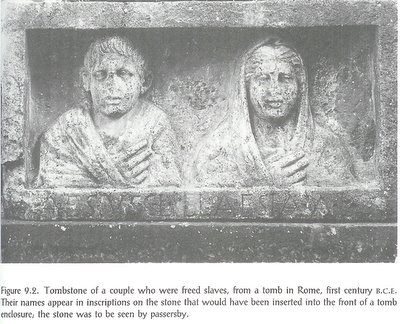When people talk about difficult verses, usually they mean that it is a difficult topic. Take for example the verse "love your enemies, and pray for them that persecute you." The meaning of this verse is crystal clear, but the application of it in our daily life is quite a challenge...
But there are also verses in the Bible that are kind of obscure. We just don't understand their meaning or we are not familiar with the situation at hand. Sometimes we just know half of the story. That can happen in the Epistles. These are often an answer to a question or a problem in a certain congregation. We read the answer, but we do not know the question or the problem...
1 Corinthians 11:3-16 is such a passage. Here is verse 10 in 3 versions.
For this cause ought the woman to have power on her head because of the angels. KJV
That is why a wife ought to have a symbol of authority on her head, because of the angels. ESV
It is for this reason that a woman ought to have authority over her own head, because of the angels. TNIV
It is full of exegetical questions and problems. Even Bible translators come to different, sometimes even opposite, translations of verses from this passage.
- What were the women in Corinth doing? What was Paul responding to?
- What is the relation between the prohibition of long hair for men and the prohibition (in the Old Testament) of cutting one's hair for Nazarites (Numbers 6:5?)
- When is the term head used literally and when figuratively here?
- What is the relation between the speaking and praying of women here (verse 5) and the alleged ban on public speaking for women in meetings (1 Cor. 14:34)
- What is the relation between the headship of Christ and God in verse 3 and the doctrine of the Trinity?
- What do angels have to do with all of this (verse 10?)
- To what extend are we dealing here with cultural defined regulations? (If a woman with a bald head is not a shame, is there then no need to cover it? See verse 6.)
- Are the questions in verse 13 and 14 rhetorical (are they obviously answered with yes,) or is there no reason at all to translate these verses as interrogatives (I hope to write more on this later.)
Read related posts in Dutch at Equamusic.





 "Here we have a representation of Paul and Anthony breaking bread. This scene relates to the one above it as Anthony, searching for Paul in the desert, meets helpful beasts. When Paul and Anthony met, they had (ironically) a contest in humility; each insists on letting the other break the bread in Eucharistic fashion. They then decide to break the bread together. The Latin of the panel reads "+ SCS PAULUS ET A[ntonius duo eremitae (from Howlett 75)] FREGERUNT PANEM IN DESERTO," "Saints Paul and Anthony, two hermits, broke bread in the desert."
"Here we have a representation of Paul and Anthony breaking bread. This scene relates to the one above it as Anthony, searching for Paul in the desert, meets helpful beasts. When Paul and Anthony met, they had (ironically) a contest in humility; each insists on letting the other break the bread in Eucharistic fashion. They then decide to break the bread together. The Latin of the panel reads "+ SCS PAULUS ET A[ntonius duo eremitae (from Howlett 75)] FREGERUNT PANEM IN DESERTO," "Saints Paul and Anthony, two hermits, broke bread in the desert." 

